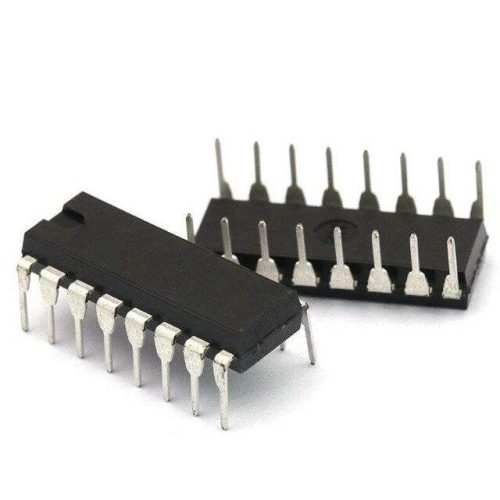CY241V08ASC-01 Overview
The CY241V08ASC-01 is a high-performance 8-bit asynchronous FIFO memory device designed to optimize data buffering and flow control in digital systems. Featuring a wide operating voltage range and fast access times, it supports seamless data transfer between asynchronous clock domains, making it ideal for applications requiring reliable, low-latency data storage. Its compact 20-pin SOIC package facilitates easy PCB integration, while built-in status flags enable precise monitoring of FIFO status. This product is engineered to deliver dependable performance in industrial and communication systems. For detailed specifications and purchasing, visit IC Manufacturer.
CY241V08ASC-01 Technical Specifications
| Parameter | Specification |
|---|---|
| Data Width | 8-bit |
| FIFO Depth | 512 words |
| Operating Voltage | 4.5 V to 5.5 V |
| Access Time | 10 ns (max) |
| Package Type | 20-pin SOIC |
| Operating Temperature Range | 0??C to +70??C |
| Power Supply Current | 40 mA (typical) |
| Write and Read Clocks | Asynchronous |
| Status Flags | Full, Empty, Almost Full, Almost Empty |
CY241V08ASC-01 Key Features
- 8-bit data width with 512-word depth: Enables efficient buffering of sizable data streams without data loss.
- Asynchronous read/write clocks: Allows data transfer between different clock domains, enhancing design flexibility.
- Integrated status flags: Full, Empty, Almost Full, and Almost Empty indicators provide real-time FIFO status for precise flow control.
- Fast access time up to 10 ns: Supports high-speed system operations and minimizes processing latency.
- Wide voltage operating range (4.5 V to 5.5 V): Ensures compatibility with standard 5 V systems and stable performance.
- Compact 20-pin SOIC package: Simplifies PCB layout in space-constrained industrial applications.
- Low power consumption: Typical supply current of 40 mA supports energy-efficient system design.
CY241V08ASC-01 Advantages vs Typical Alternatives
This FIFO device offers superior asynchronous operation with integrated status flag outputs, enhancing system reliability and data integrity compared to synchronous FIFOs. Its fast access times and wide voltage tolerance ensure high-speed, stable performance in industrial environments. The combination of compact packaging and low power consumption makes it a practical choice over larger, less efficient memory buffers.
🔥 Best-Selling Products
Typical Applications
- Data buffering between different clock domains in communication systems, supporting seamless data flow and preventing data loss during asynchronous transfers.
- Industrial automation equipment requiring precise control of data streams for sensor data acquisition and processing.
- Embedded systems needing temporary storage to manage burst data traffic efficiently.
- High-speed digital systems such as video data processing where fast access to buffered data is critical.
CY241V08ASC-01 Brand Info
The CY241V08ASC-01 is a product from a leading semiconductor manufacturer specializing in memory and interface solutions for industrial and communication applications. This FIFO memory device embodies the brand??s commitment to quality, reliability, and performance. Designed to meet rigorous standards, it supports engineers and system designers in creating robust digital solutions with efficient data handling capabilities.
FAQ
What is the maximum operating frequency of the CY241V08ASC-01?
The maximum operating frequency is determined by the device??s 10 ns access time, which translates to a maximum clock rate of approximately 100 MHz. This speed supports high-performance applications requiring fast data throughput.
🌟 Featured Products

“Buy MAX9312ECJ+ Precision Voltage Comparator in DIP Package for Reliable Performance”

0339-671-TLM-E Model – High-Performance TLM-E Package for Enhanced Functionality

1-1415898-4 Connector Housing, Electrical Wire-to-Board, Receptacle, Packaged

1-1462039-7 Electrical Connector, PCB Mount, Through-Hole, 2-Pin Header Socket
Can the CY241V08ASC-01 be used in mixed-voltage environments?
This device operates within a 4.5 V to 5.5 V range, making it suitable for standard 5 V systems. It is not designed for direct interfacing with lower voltage domains without appropriate level shifting circuitry.
How do the status flags improve system design?
The integrated Full, Empty, Almost Full, and Almost Empty flags allow real-time monitoring




